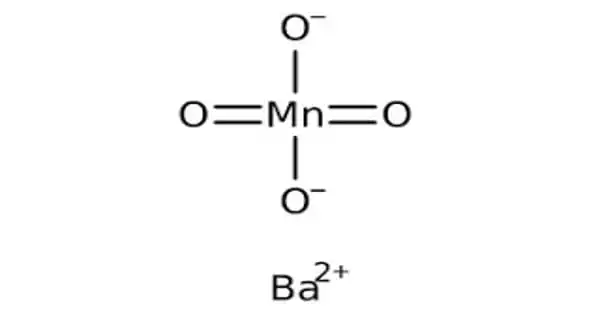The recipients of the 2024 Breakthrough Prize, as well as the New Horizons and Maryam Mirzakhani New Frontiers Prizes, have been revealed. The “Oscars of Science” are the world’s largest international science prizes, with this year’s total payout of $15.75 million.
The five mainstage prizes are each worth $3 million (three in life sciences, one in fundamental physics, and one in mathematics). Sabine Hadida, Paul Negulescu, and Fredrick Van Goor won first place in Life Science for creating a medication that helps restore an essential protein in cystic fibrosis patients.
These people have a mutation in a gene that produces the protein CFTR. In 90% of cases, the protein is misfolded, and it cannot reach the surface of cells where it should be, and even if it does, it is insufficient. Cystic fibrosis patients have a life expectancy of 30 years, which is increasing over time. Small organic compounds are used in therapies such as TRIKAFTA to fix the proteins, which is a novel technique.
“There were no treatments that addressed the underlying cause of CF until our therapies became available.” CFTR modulators have significantly altered the standard of care. For example, newly published data from the United Kingdom showed that youngsters treated with TRIKAFTA between the ages of 12 and 17 would live an average of 82.5 years,” the Vertex Pharmaceuticals team told IFLScience.

“Our work has had ramifications beyond CF.” We showed that small molecule medicines might be utilized to repair damaged proteins and correct hereditary disorders. This breakthrough method sparked hope that other hereditary illnesses could be cured with small molecule medicines.”
Carl H. June and Michel Sadelain were given a second Life Science prize for the creation of chimeric antigen receptor T-cell immunotherapy. This method changes patients’ immune cells to target and kill cancer cells, and further developments show significant potential. Researchers are now investigating ways to use the strategy to prevent tumor recurrence, as well as possible applications to autoimmune, inflammatory, cardiac, and neurological disorders.
Thomas Gasser, Ellen Sidransky, and Andrew Singleton were awarded the third Life Science prize for their work in finding risk genes for Parkinson’s disease. Their findings resulted in a paradigm change in how the disease is understood and progresses. This shift has also had a significant impact on novel medicines in terms of target and administration, with the goal of slowing or preventing disease progression.
John Cardy and Alexander Zamolodchikov were awarded the Fundamental Physics Prize for their contributions to the extension and evolution of Quantum Field Theory. Cardy devised the mathematics of certain quantum system transitions, such as helium becoming a frictionless superfluid or the advent of superconductivity under certain conditions.
Simon Brendle received the Mathematics prize for his groundbreaking contributions to differential geometry, specifically fluctuating curved spaces. Think of a soap bubble stuck between the turns of an oscillating spring, and this math is about measuring the surface of those bubbles. The applications are numerous, and one of them is the comprehension of space-time itself.
The recipients of the Maryam Mirzakhani New Frontiers and New Horizons prizes in mathematics also focused on phase transitions, curves, and unusual surfaces. There were three winners in each category. Hannah Larson, Laura Monk, and Mayuko Yamashita each received $50,000 in the former. Roland Bauerschmidt, Michael Groechenig, and Angkana Rüland received the latter awards.
The New Horizons in Physics prizes are on the rise, owing to their emphasis on astrophysics. Laura M. Pérez, Paola Pinilla, Nienke van der Marel, and Til Birnstiel received one for their research on dust traps around young stars and how they might lead to planet formation. Mikhail Ivanov, Oliver Philcox, and Marko Simonovi received another award for their work on the large-scale structures of the universe and the fundamental physics we may learn from them.
Last but not least, Michael Johnson and Alexandru Lupsasca have been awarded the Nobel Prize in physics for their work on the photon ring, a light-based structure that forms around a black hole.
“Black holes are the most pure and elegant objects in the universe, defining knowledge boundaries and setting the bar for our most ambitious experiments and theories.” However, the swirling, incandescent plasma that allows us to see’ astrophysical black holes also conceals their simplicity.The photon ring is formed of light that has passed through the black hole and has the properties of the black hole imprinted on it. This fleeing light then penetrates through all of the surrounding material, allowing us to glimpse the exquisite geometry of a black hole’s space-time directly. It’s an astonishing black hole property that’s unlike anything we’ve ever researched.”
Obtaining this information would be critical for testing gravity theories and better understanding this fundamental force of nature. Johnson and Lupsasca intend to measure the photon ring by enhancing the Event Horizon Telescope, a virtual facility the size of our globe that was responsible for the first images of black holes. These were the ones in the heart of M87 (AKA M87) and the Milky Way (Sagittarius A).
“The EHT is an extraordinary experiment that has succeeded in capturing the first image of a real black hole in the sky by leveraging a global array of telescopes.”
“Together with Michael Johnson and many talented colleagues, we are now developing a detailed proposal for NASA to launch a space mission targeting the photon rings of the supermassive black holes M87* and Sgr A*, the black hole at the center of our own galaxy.”
Each New Horizon Prize is $100,000 in value. The Breakthrough Prize has granted $308 million since its debut. Sergey Brin, Priscilla Chan and Mark Zuckerberg, Julia and Yuri Milner, and Anne Wojcicki launched the prizes in 2012.
















